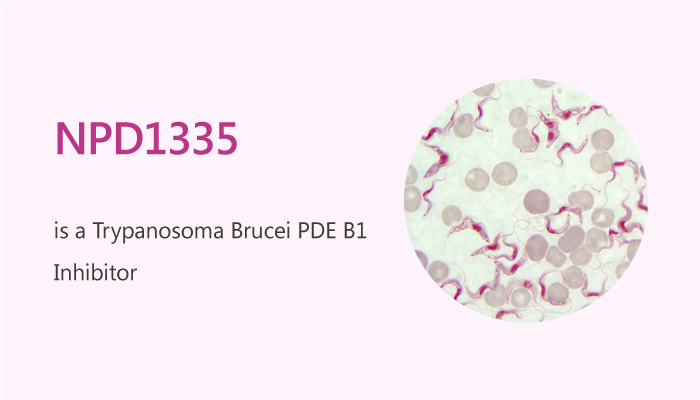Trypanosoma brucei (T.b.) rhodesiense and T.b. gambiense are endemic in sub-Saharan Africa. They are typical two causative agents of human African trypanosomiasis (HAT). The drugs for HAT treatment currently on the market have major disadvantages, including limited clinical efficacy in certain disease stages, complex administration protocols and toxicity. Additionally, the drugs against HAT always result in drug resistance. Especially, scientists have confirmed that inhibitors against Trypanosoma brucei phosphodiesterase B1 (TbrPDEB1) and B2 (TbrPDEB2) have gained interest as new treatments for human African trypanosomiasis. Accordingly, a study from Erik de Heuvel discovered and identified a novel TbrPDEB1 inhibitor, NPD-1335.

Over the years, several studies reported different hPDE4 inhibitors as starting point for TbrPDEB1 inhibitors, cilomilast analogue and rolipram analogue. However, selectivity for TbrPDEB1 over hPDE4 in combination with antiparasitic activity has been a challenge.
In this study, the authors demonstrated that the activity profile for TbrPDEB1 over hPDE4 can be obtained by targeting a parasite-specific P-pocket present near the active site of TbrPDEB1. Therefore, they report the structure-based design of new alkynamide tetrahydrophthalazinones with different amide substituents in an attempt to obtain ligands with a better antiparasitic activity.
As a result, among the designed compounds, NPD-1335 exhibited excellent activity. NPD1335 is a Trypanosoma brucei phosphodiesterase B1 (TbrPDEB1) inhibitor with submicromolar activities against T. brucei parasites. Moreover, it displays a greatly improved cytotoxicity profile. NPD1335 increases intracellular cAMP levels and results in the distortion of the cell cycle and cell death.